Easily Verify if a Plastic Surgeon in Mexico is Board Certified
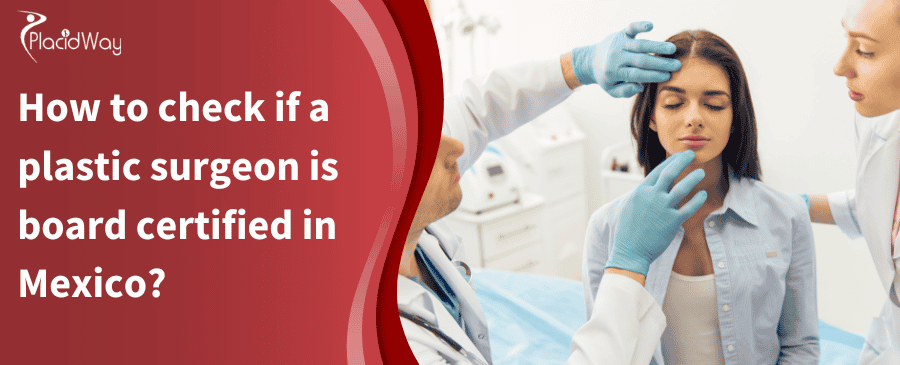
The good news is that Mexico has established rigorous standards and official bodies dedicated to certifying medical professionals, including plastic surgeons. Understanding how to navigate these certifications is key to making an informed decision. This guide will walk you through the essential steps to verify a plastic surgeon's credentials in Mexico, focusing on official channels and what you should look for to ensure your chosen professional is genuinely board certified. We'll delve into the specific organizations responsible for oversight, the importance of their certifications, and other vital considerations for a safe and successful experience. By the end of this, you'll feel more confident and prepared to choose a qualified and trustworthy plastic surgeon in Mexico.
How to Check if a Plastic Surgeon is Board Certified in Mexico?
The primary and most reliable way to confirm a plastic surgeon's board certification in Mexico is through the Consejo Mexicano de Cirugía Plástica Estética y Reconstructiva (CMCPER). This organization is the only recognized authority in Mexico that certifies plastic surgeons who have completed their specialized training and meet the highest standards. Their website provides a public directory where you can search for a surgeon by name to confirm their active certification.
Additionally, you can cross-reference information with the Consejo Nacional de Certificación en Medicina (CONACEM), which oversees the certification of various medical specialties in Mexico. While CMCPER is specific to plastic surgery, CONACEM provides a broader registry of certified doctors across all specialties, offering another layer of verification. Always look for an active and current certification, as these need to be renewed periodically.
What is the Consejo Mexicano de Cirugía Plástica Estética y Reconstructiva (CMCPER)?
The Consejo Mexicano de Cirugía Plástica Estética y Reconstructiva (CMCPER) is a crucial entity for anyone seeking plastic surgery in Mexico. It is a non-profit organization established to regulate and certify plastic surgeons in the country. Its main purpose is to ensure that plastic surgeons practicing in Mexico have undergone the necessary specialized training, passed rigorous examinations, and adhere to a strict code of ethics and professional conduct.
Certification by CMCPER means that a plastic surgeon has completed an accredited medical school, followed by at least five years of residency training in general surgery, including a minimum of two years dedicated exclusively to plastic surgery. This intensive training covers all aspects of the specialty, from reconstructive procedures to aesthetic enhancements. Furthermore, CMCPER certification is not a one-time event; surgeons must undergo recertification every five years, demonstrating their commitment to continuing education and staying current with the latest techniques and advancements in plastic surgery.
How to use the CMCPER Directory to verify a surgeon?
Using the CMCPER directory is a straightforward process designed to provide transparency and peace of mind. Here's a step-by-step guide:
- Visit the Official Website: Go to the official CMCPER website, which is typically cmcper.org.
- Locate the Directory: Look for a section titled "Especialistas Certificados" (Certified Specialists) or "Directorio" (Directory). This is usually prominently displayed on the homepage or in the main navigation menu.
- Search for the Surgeon: Most directories allow you to search by the surgeon's full name or by the initial of their last name. Enter the surgeon's details accurately.
- Verify Status: Once you find the surgeon's name, check their status. The directory will indicate if they are currently certified and often provide their certification number and the dates of their initial certification and last recertification. An "active" status is what you are looking for.
If a surgeon's name does not appear in the CMCPER directory, or if their certification is listed as inactive or expired, it is a significant red flag. It means they are not currently recognized by Mexico's official plastic surgery board.
What is a "Cédula Profesional" and why is it important?
The "Cédula Profesional" is a vital document in Mexico for any practicing professional, including doctors. It's essentially a professional license issued by the Secretaría de Educación Pública (SEP - Ministry of Public Education) that confirms a person has completed their university studies and is legally authorized to practice their profession. For doctors, there are typically two types of "cédulas" you should be aware of:
- Cédula Profesional (General): This confirms their general medical degree, indicating they are a licensed physician.
- Cédula de Especialidad: This confirms their specialization (e.g., plastic surgery), showing they have completed the required residency training in that specific field.
You can verify a doctor's "Cédula Profesional" by visiting the official website of the Mexican government's National Registry of Professionals (Registro Nacional de Profesionistas). This online tool allows you to enter a doctor's name or cédula number to confirm its validity. Having both a general medical cédula and a specialty cédula for plastic surgery is essential for a qualified plastic surgeon.
Are there other recognized plastic surgery associations in Mexico?
While CMCPER is the primary certifying body, the Asociación Mexicana de Cirugía Plástica, Estética y Reconstructiva, A.C. (AMCPER) is another highly respected organization. AMCPER is a professional association that plastic surgeons can join once they are certified by CMCPER and meet other stringent membership criteria. Membership in AMCPER signifies a surgeon's dedication to ongoing professional development and adherence to high standards within the field.
Think of it this way: CMCPER is like the "licensing board" that grants the initial and ongoing certification, while AMCPER is a "professional club" for those who have met those rigorous standards and wish to participate in continuing education, conferences, and networking within the specialty. A surgeon being a member of AMCPER, in addition to being CMCPER certified, adds another layer of credibility and indicates their active engagement in the plastic surgery community.
What are the qualifications required for a plastic surgeon in Mexico to be board certified?
Becoming a board-certified plastic surgeon in Mexico involves a comprehensive and demanding educational and training pathway. The qualifications typically include:
- Medical School: Completion of a medical degree from a recognized university, usually lasting 6-7 years.
- Social Service: A period of mandatory social service, typically one year, after medical school.
- General Surgery Residency: Completion of a residency program in general surgery, which typically lasts 3 to 4 years. This foundational training provides a broad surgical skill set.
- Plastic Surgery Residency: Following general surgery, a specialized residency program in plastic, aesthetic, and reconstructive surgery, lasting an additional 2 to 4 years. This is where the surgeon gains in-depth knowledge and hands-on experience in the specific techniques of plastic surgery.
- CMCPER Examination: After completing all residency training, the surgeon must pass a comprehensive oral and written examination administered by the CMCPER. This exam assesses their knowledge, skills, and judgment across the entire spectrum of plastic surgery.
- Recertification: Once certified, plastic surgeons must undergo a recertification process every five years, which involves demonstrating continued professional development, participation in educational activities, and sometimes re-examination.
This extensive process ensures that only highly trained and competent individuals receive the official board certification, safeguarding patient safety and quality of care.
What are the risks of choosing an uncertified plastic surgeon in Mexico?
The risks associated with choosing an uncertified plastic surgeon are substantial and should not be underestimated. An uncertified surgeon may lack the formal, rigorous training and education required to safely and effectively perform complex surgical procedures. This can lead to a range of severe consequences:
- Increased Complications: Higher risk of infections, excessive bleeding, nerve damage, scarring, and complications related to anesthesia.
- Poor Aesthetic Outcomes: Unsatisfactory or unnatural-looking results, asymmetry, or disfigurement that may require costly and difficult revision surgeries.
- Irreversible Damage: Permanent damage to tissues, organs, or functions due to surgical errors.
- Inadequate Emergency Response: Lack of proper training to handle surgical emergencies, which can be life-threatening.
- No Accountability: Uncertified surgeons may not be subject to the same professional oversight or ethical standards, making it harder to seek recourse in case of negligence or malpractice.
- Unsafe Facilities: They may operate in facilities that are not properly equipped, licensed, or sanitized, further increasing risks.
Prioritizing board certification is the most critical step you can take to mitigate these dangers and ensure a safer surgical experience.
How can I assess a plastic surgeon's experience and reputation in Mexico?
Beyond board certification, a surgeon's experience and reputation are vital indicators of their skill and reliability. Here's how to assess them:
- Years in Practice and Procedures Performed: Inquire about how long the surgeon has been practicing plastic surgery and how many times they have performed the specific procedure you are interested in. Experience often correlates with better outcomes.
- Before-and-After Photos: Reputable surgeons will have a portfolio of before-and-after photos of their previous patients. Look for consistent, natural-looking results and ensure the photos are of real patients. Pay attention to results similar to what you hope to achieve.
- Patient Testimonials and Reviews: Search for online reviews on independent platforms (e.g., Google Reviews, RealSelf, specialized medical tourism forums). Pay attention to recurring themes, both positive and negative, regarding patient care, communication, and results.
- Referrals: If possible, seek referrals from friends, family, or your local doctor who may have knowledge of medical tourism or specific surgeons in Mexico.
- Medical Tourism Facilitators: If you are using a medical tourism agency, ensure they have a rigorous vetting process for the surgeons and clinics they recommend. Ask them about their criteria for selection and how they verify credentials.
- Professional Memberships: Beyond CMCPER, check if they are members of international organizations like the International Society of Aesthetic Plastic Surgery (ISAPS), which indicates a commitment to global standards.
Combining these methods will give you a comprehensive picture of the surgeon's expertise and standing in the community.
What questions should I ask during a consultation with a plastic surgeon in Mexico?
A thorough consultation is your opportunity to gather crucial information and evaluate the surgeon's communication style and expertise. Here are key questions to ask:
| Category | Questions to Ask |
|---|---|
| Qualifications & Experience |
|
| Procedure Details |
|
| Facility & Safety |
|
| Cost & Logistics |
|
Don't hesitate to ask follow-up questions until you feel completely satisfied and informed.
Is plastic surgery in Mexico generally safe?
The safety of plastic surgery in Mexico is a topic that often comes with misconceptions. The truth is, plastic surgery in Mexico can be as safe as in any other country, provided you choose a qualified, board-certified plastic surgeon and an accredited surgical facility. Mexico has many highly skilled plastic surgeons trained in top institutions worldwide, often using advanced techniques and equipment.
However, safety concerns arise when individuals opt for uncertified practitioners or unlicensed clinics, often driven by extremely low prices. These situations dramatically increase the risk of complications, poor outcomes, and health hazards. Therefore, the key to ensuring safety lies entirely in your due diligence. By selecting a surgeon verified by CMCPER and ensuring the facility is properly licensed and equipped, you can significantly mitigate risks and achieve a safe and successful outcome.
What are the accreditations to look for in a plastic surgery clinic or hospital in Mexico?
The facility where your surgery will take place is as important as the surgeon themselves. A reputable clinic or hospital will have specific accreditations that signify their commitment to patient safety, hygiene, and quality of care. Look for:
- National Accreditations: In Mexico, look for accreditation from the Consejo de Salubridad General (CSG). This is a Mexican government body that evaluates healthcare facilities against national quality and safety standards.
- International Accreditations: For an added layer of assurance, some top clinics and hospitals in Mexico also seek international accreditations. The most recognized international accreditation for healthcare facilities is from the Joint Commission International (JCI). JCI accreditation indicates that the facility meets rigorous global standards for patient safety and quality of care.
- Certifications for Operating Rooms: Ensure the clinic's operating rooms are fully equipped, comply with sterile environments, and have the necessary life support and emergency equipment.
Always confirm that the facility is specifically licensed to perform surgical procedures and that it meets all health regulations. A transparent clinic will be willing to provide this information upon request.
How does the cost of plastic surgery in Mexico compare to other countries, particularly the US or Canada?
One of the main reasons many individuals consider plastic surgery in Mexico is the significant cost savings. Procedures in Mexico can be considerably more affordable than in countries like the United States or Canada, often ranging from 40% to 70% less. This cost difference is typically attributed to several factors:
- Lower Overhead Costs: The cost of operating medical facilities, including rent, utilities, and administrative staff wages, is generally lower in Mexico.
- Surgeon Fees: While Mexican plastic surgeons are highly trained, their fees are often lower compared to their counterparts in countries with higher living costs.
- Medical Supply Costs: The cost of medical supplies, implants, and pharmaceuticals can also be lower in Mexico, contributing to overall savings.
It is crucial to understand that lower cost does not automatically equate to lower quality. Many Mexican plastic surgeons are internationally trained and perform a high volume of procedures, maintaining excellent results. However, it is vital to distinguish between clinics offering genuinely competitive prices and those with dangerously low prices that might compromise safety or quality. Always ensure that the comprehensive price includes all fees: surgeon's fees, anesthesia, facility costs, and post-operative care, to avoid surprises.
What is the role of medical tourism facilitators when seeking plastic surgery in Mexico?
Medical tourism facilitators play a significant role for many patients traveling to Mexico for plastic surgery. These agencies act as intermediaries, helping to streamline the entire process. Their services can include:
- Surgeon Vetting: Reputable facilitators have a network of pre-vetted, board-certified plastic surgeons and accredited clinics. They often conduct their own due diligence to ensure the quality and safety of their recommended providers.
- Travel and Accommodation: They can assist with booking flights, arranging ground transportation, and securing accommodation, sometimes including recovery suites.
- Translation Services: For patients who do not speak Spanish, facilitators can provide translators to ensure clear communication with medical staff.
- Logistics and Appointments: They help schedule consultations, pre-operative tests, surgery, and post-operative follow-ups.
- Post-Operative Support: Some facilitators offer ongoing support after your return home, helping with questions or coordinating further care if needed.
While facilitators can simplify the process, it's still essential to conduct your own research on both the facilitator and the recommended surgeon. Ensure the facilitator is transparent about their vetting process and does not pressure you into choosing a specific surgeon.
How long should I plan to stay in Mexico for plastic surgery?
The ideal length of stay in Mexico for plastic surgery depends heavily on the specific procedure you are undergoing, as well as your individual healing process. However, a general guideline is to allow sufficient time for initial recovery and crucial post-operative check-ups before traveling back home. Here’s a typical breakdown:
- Minor Procedures (e.g., Eyelid Surgery, Rhinoplasty): You might need to stay for 5-7 days. This allows for the initial swelling to subside, removal of stitches (if applicable), and a final check-up with your surgeon.
- Moderate Procedures (e.g., Breast Augmentation, Liposuction): A stay of 7-10 days is often recommended. This gives enough time for significant swelling and bruising to decrease, and for the surgeon to monitor your early recovery.
- Major Procedures (e.g., Tummy Tuck, Mommy Makeover, Facelift): For more extensive surgeries, a stay of 10-14 days or even longer might be necessary. These procedures often involve more extensive recovery, drainage tubes, and require more frequent post-operative care and monitoring by your surgeon.
It’s important not to rush your departure. Flying too soon after surgery, especially major surgery, can increase the risk of complications such as deep vein thrombosis (DVT). Your surgeon will provide specific recommendations based on your procedure and recovery progress. Always factor in extra days for unexpected delays or additional recovery time if needed.
What kind of post-operative care can I expect after plastic surgery in Mexico?
Effective post-operative care is crucial for successful outcomes and a smooth recovery. When undergoing plastic surgery in Mexico, you should expect a comprehensive plan for your post-operative period. This typically includes:
- Follow-up Appointments: Regular appointments with your surgeon or their team during your stay to monitor your healing, check incisions, remove stitches or drains, and address any concerns.
- Medication: Prescriptions for pain medication, antibiotics (to prevent infection), and sometimes anti-inflammatory drugs.
- Wound Care Instructions: Detailed instructions on how to care for your incisions, including cleaning, dressing changes, and signs of infection to watch for.
- Compression Garments: Many procedures, especially those involving body contouring, require the use of compression garments to reduce swelling and support the newly contoured areas.
- Activity Restrictions: Clear guidelines on physical activity limitations, including when you can resume exercise, work, and normal daily routines.
- Lymphatic Drainage Massages: For procedures like liposuction or tummy tucks, your surgeon might recommend lymphatic drainage massages to help reduce swelling and improve results.
- Emergency Contact: Access to an emergency contact number for your surgical team in case of urgent concerns during your recovery period in Mexico.
Before you travel back home, ensure you have a clear understanding of your long-term recovery plan, including instructions for continued self-care and any necessary follow-ups with your local doctor.
What are the common procedures performed by board-certified plastic surgeons in Mexico?
Board-certified plastic surgeons in Mexico are trained to perform a full spectrum of plastic and reconstructive procedures. The most commonly sought-after aesthetic procedures by international patients include:
- Breast Augmentation: Increasing breast size and improving shape using implants.
- Liposuction: Removing excess fat deposits from various areas of the body.
- Abdominoplasty (Tummy Tuck): Removing excess skin and fat from the abdomen and tightening abdominal muscles.
- Rhinoplasty (Nose Job): Reshaping the nose to improve its appearance and proportion.
- Facelift: Reducing visible signs of aging in the face and neck.
- Blepharoplasty (Eyelid Surgery): Removing excess skin and fat from the eyelids to rejuvenate the eye area.
- "Mommy Makeover": A combination of procedures (often breast augmentation/lift, tummy tuck, and liposuction) to restore the body after pregnancy.
Beyond aesthetic procedures, board-certified plastic surgeons also perform reconstructive surgeries, which include procedures to correct birth defects, trauma injuries, or post-cancer reconstruction, demonstrating their broad expertise.
What is the importance of a surgeon's specialty license (Cédula de Especialidad)?
While the "Cédula Profesional" (general professional license) indicates that a person is a licensed doctor, the "Cédula de Especialidad" is even more specific and critically important for plastic surgery. This document proves that the physician has successfully completed a recognized residency program in a particular medical specialty, like plastic, aesthetic, and reconstructive surgery, and is therefore legally authorized to practice within that specialized field.
It's a common misconception that any licensed doctor can perform cosmetic procedures. However, without a "Cédula de Especialidad" in plastic surgery, a doctor is not recognized by the Mexican government as a specialist in that field, even if they claim to have taken short courses or workshops. Always verify that your chosen surgeon holds a valid "Cédula de Especialidad" for plastic surgery, as this is a legal and professional requirement for performing such procedures.
How can I ensure clear communication with my Mexican plastic surgeon?
Effective communication is paramount in any medical procedure, especially one as personal as plastic surgery. Language barriers can lead to misunderstandings, so it's essential to plan for clear communication. Here are some strategies:
- Medical Tourism Facilitators: If you are working with a medical tourism facilitator, they often provide professional medical translators who specialize in medical terminology. This can be invaluable during consultations, pre-operative discussions, and post-operative care instructions.
- Bilingual Staff: Many reputable clinics catering to international patients will have bilingual staff, including receptionists, nurses, and even the surgeons themselves. Ask about their English proficiency during your initial inquiry.
- Professional Medical Interpreter: Consider hiring an independent professional medical interpreter. Unlike a general translator, a medical interpreter is trained in medical ethics and precise terminology, ensuring accuracy and confidentiality.
- Bring a Bilingual Companion: If you have a trusted friend or family member who is fluent in both English and Spanish, consider having them accompany you to appointments.
- Written Communication: Request important information, such as consent forms, pre-operative instructions, and post-operative care guides, in writing and in English.
Never rely on informal translation apps for critical medical discussions. Ensuring you fully understand every aspect of your procedure, risks, and recovery instructions is vital for your safety and satisfaction.
What are patient rights in Mexico for medical tourism?
Mexico's healthcare system recognizes patient rights, which generally align with international standards. When undergoing medical treatment as a medical tourist, you are typically afforded the following rights:
- Right to Informed Consent: You have the right to receive complete and clear information about your diagnosis, proposed treatment, risks, benefits, alternatives, and expected outcomes before agreeing to any procedure. This information should be provided in a language you understand.
- Right to Quality Care: You have the right to receive high-quality medical care delivered by qualified professionals in a safe and appropriate environment.
- Right to Privacy and Confidentiality: Your medical information and treatment details are confidential and should be protected.
- Right to Access Medical Records: You have the right to access your medical records and receive copies if requested.
- Right to a Second Opinion: You are entitled to seek a second medical opinion.
- Right to File a Complaint: If you have concerns about your care, you have the right to file a complaint through established channels. The National Commission of Medical Arbitration (Comisión Nacional de Arbitraje Médico - CONAMED) is a specialized body in Mexico that mediates disputes between patients and healthcare providers.
Understanding these rights empowers you to advocate for yourself and ensures you receive respectful and ethical care throughout your medical journey in Mexico.
Should I consider medical insurance for plastic surgery in Mexico?
Most standard health insurance policies, whether in your home country or Mexico, typically do not cover elective cosmetic procedures. However, it is highly recommended to consider purchasing specialized insurance when traveling for plastic surgery in Mexico. This type of insurance is different from your regular health insurance and usually falls under "medical tourism insurance" or "travel medical complications insurance."
This specialized insurance can provide coverage for:
- Medical Complications: If you experience unexpected complications related to your surgery that require additional medical care or an extended stay.
- Travel Interruptions: Coverage for unforeseen delays or cancellations that impact your travel plans.
- Emergency Medical Evacuation: In rare but serious cases, this covers the cost of transporting you to a higher-level medical facility or back to your home country for urgent care.
Carefully review the policy details to understand what is covered, the limits of coverage, and any exclusions. It's an important safeguard to protect your investment and your well-being.
What are some red flags to watch out for when choosing a plastic surgeon in Mexico?
While Mexico offers excellent options for plastic surgery, it's crucial to be aware of potential red flags that could indicate an unqualified or unsafe practitioner. Being vigilant can save you from serious complications:
- Unbelievably Low Prices: If a price seems too good to be true, it likely is. Extremely low costs often signal compromises on surgeon qualifications, facility quality, or materials used.
- Lack of Board Certification (CMCPER): This is the biggest red flag. If a surgeon is not actively certified by CMCPER, they should not be performing plastic surgery in Mexico.
- Vague Answers or Evasiveness: A trustworthy surgeon will be transparent and answer all your questions clearly. Avoid those who are vague about their experience, qualifications, or the procedure details.
- No Facility Accreditation: If the surgeon operates in a clinic that is not accredited by national (CSG) or international (JCI) bodies, or if they refuse to disclose this information.
- Refusal to Provide Credentials: Any surgeon unwilling to provide their CMCPER certification number, Cédula Profesional, or other credentials should be avoided.
- High-Pressure Sales Tactics: Be wary of clinics or surgeons who pressure you into making a quick decision or undergoing additional procedures you haven't considered.
- Generic Before-and-After Photos: If all "before-and-after" photos look too perfect, appear stock images, or are not clearly attributed to their work.
- Poor Communication: Difficulty communicating due to language barriers without a professional translator is a significant risk.
Trust your instincts. If something feels off, it probably is. Prioritize safety and quality over cost savings alone.
What is the typical recovery process for plastic surgery in Mexico?
The recovery process after plastic surgery varies widely depending on the type and extent of the procedure. However, a general outline includes several phases:
- Immediate Post-Operative Period (Days 1-3): This is typically spent resting, managing pain with prescribed medication, and experiencing initial swelling and bruising. You will likely have dressings, bandages, and possibly drains. Your surgeon will have initial follow-ups.
- Early Recovery (Days 4-7): Swelling and bruising may peak before gradually subsiding. You will start to regain more mobility, though strenuous activities are restricted. Stitches or drains might be removed during this period. Many patients are cleared for light activity and often for travel (if a shorter stay was planned).
- Mid-Term Recovery (Weeks 2-6): Most significant swelling should have reduced, and you'll feel more comfortable. You can usually return to light work and most daily activities, but heavy lifting or vigorous exercise is still avoided. Compression garments are often worn during this phase.
- Long-Term Recovery (Months 2-12+): Residual swelling continues to resolve, and scars mature and fade. The final results of the surgery become more apparent. Full return to all activities, including strenuous exercise, is usually cleared by this stage.
Your surgeon will provide personalized recovery instructions, including specific timelines for returning to work, exercise, and normal activities. Adhering to these guidelines is crucial for optimal healing and the best possible results.
How important are patient testimonials and reviews for choosing a plastic surgeon in Mexico?
While official certifications and professional qualifications are non-negotiable, patient testimonials and reviews offer invaluable real-world insights into a plastic surgeon's practice. They provide a glimpse into the patient experience that official documents cannot convey. Here's why they are important:
- Firsthand Experience: Reviews can describe the surgeon's bedside manner, the clinic's environment, the support staff's helpfulness, and the clarity of communication.
- Outcome Verification: Patients often share their satisfaction (or dissatisfaction) with their surgical results, sometimes including before-and-after photos, which can help you set realistic expectations.
- Problem Resolution: Positive reviews might highlight how a surgeon or clinic handled unexpected situations or concerns, indicating their problem-solving skills and commitment to patient well-being.
- Identifying Patterns: Looking for consistent themes across multiple reviews can help you identify a surgeon's strengths or potential areas of concern.
However, it's also important to read reviews critically. Look for reviews on multiple independent platforms rather than just the surgeon's own website. Be cautious of overly generic or suspiciously perfect reviews, and consider how the surgeon or clinic responds to negative feedback, if any. They should be one part of your comprehensive research, not the sole deciding factor.
What is the role of the Mexican government in regulating plastic surgery?
The Mexican government plays a significant role in regulating the practice of medicine, including plastic surgery, to protect its citizens and medical tourists. Key government entities involved in this oversight include:
- Secretaría de Educación Pública (SEP): This ministry is responsible for issuing the Cédula Profesional (professional license) and Cédula de Especialidad (specialty license) that legally authorize doctors to practice medicine and their specific specialties.
- Secretaría de Salud (Ministry of Health): This is the overarching government body responsible for public health policies and regulations.
- COFEPRIS (Comisión Federal para la Protección contra Riesgos Sanitarios): As the Federal Commission for the Protection against Sanitary Risks, COFEPRIS is the main regulatory body under the Ministry of Health. It is responsible for:
- Licensing and regulating all healthcare facilities, including clinics and hospitals, to ensure they meet sanitary and safety standards.
- Overseeing medical devices, pharmaceuticals, and surgical products.
- Investigating complaints related to health risks in medical practice.
- Consejo de Salubridad General (CSG): This body sets national health standards and provides accreditation to hospitals and healthcare facilities that meet stringent quality and safety criteria.
These government bodies work to ensure that medical professionals are properly qualified and that healthcare facilities operate safely and ethically, providing a framework for legitimate plastic surgery services in the country.
Can I have a virtual consultation with a plastic surgeon in Mexico before traveling?
Virtual consultations have become a standard practice, especially for medical tourism, and many reputable plastic surgeons in Mexico offer them. This is an excellent way to begin your journey and gather crucial information before committing to travel. During a virtual consultation, you can typically:
- Discuss Your Goals: Explain what you hope to achieve with the surgery and share your concerns.
- Receive Preliminary Assessment: The surgeon can assess your general suitability for the procedure based on photos or video, although a definitive assessment will require an in-person examination.
- Ask Questions: This is your opportunity to ask all the questions you have about the surgeon's qualifications, the procedure itself, recovery, costs, and logistics.
- Gauge Communication: You can get a sense of the surgeon's communication style, their English proficiency (if applicable), and how comfortable you feel interacting with them.
- Understand the Process: The surgeon or their patient coordinator can walk you through the entire process, from pre-operative tests to post-operative care.
While a virtual consultation cannot replace an in-person examination, it is a valuable first step in building rapport, clarifying expectations, and ensuring you are comfortable with your chosen surgeon before making travel arrangements.
What are the best cities in Mexico for plastic surgery and why?
Several cities in Mexico have become hubs for medical tourism, particularly for plastic surgery, due to their concentration of highly qualified surgeons, modern facilities, and established infrastructure for international patients. These include:
- Tijuana: Located just across the border from San Diego, California, Tijuana is one of the most popular destinations for medical tourism from the U.S. and Canada due to its accessibility. It boasts numerous clinics and surgeons specializing in cosmetic procedures.
- Mexico City: As the capital, Mexico City offers a vast selection of top-tier hospitals and a high concentration of experienced, board-certified plastic surgeons. It provides a more comprehensive urban experience alongside medical care.
- Guadalajara: Known as a major medical center in Mexico, Guadalajara has a strong reputation for excellent healthcare and a significant number of skilled plastic surgeons and well-equipped hospitals.
- Monterrey: Another large city with modern infrastructure, Monterrey also attracts medical tourists seeking quality plastic surgery, offering a range of reputable clinics and specialists.
These cities often have well-developed medical tourism ecosystems, including specialized recovery centers, patient coordinators, and bilingual staff, making the experience more convenient and comfortable for international visitors.
How can I verify the professional license of a plastic surgeon in Mexico?
Verifying a surgeon's professional license (Cédula Profesional) is a fundamental step to ensure they are legally authorized to practice medicine in Mexico. This is distinct from board certification but equally important. Here’s how you can do it:
- Visit the SEP Website: Go to the official website of the Secretaría de Educación Pública (SEP) or specifically the National Registry of Professionals (Registro Nacional de Profesionistas) within the SEP's online portal.
- Use the Search Function: Look for a search bar or a section dedicated to verifying professional licenses.
- Enter Surgeon's Details: You will typically need to enter the plastic surgeon's full name (first name, middle name if applicable, and last name). Sometimes, you might be able to search by their Cédula Profesional number if you have it.
- Review Results: The search results will show if the individual has a valid Cédula Profesional, along with details like the issuing institution and date. This confirms they graduated from a recognized medical university and are licensed to practice.
This verification confirms their foundational medical education and general license to practice medicine, which is a prerequisite for any specialized training or board certification. Always ensure that both their general medical license and their specialty license (Cédula de Especialidad) are valid and current.
What is the average cost range for popular plastic surgery procedures in Mexico?
While specific prices can vary significantly based on the surgeon's experience, clinic reputation, geographic location within Mexico, and the complexity of the procedure, here’s a general average cost range for some popular plastic surgery procedures:
| Procedure | Average Cost Range (USD) | Notes |
|---|---|---|
| Breast Augmentation | $3,500 - $6,000 | Includes implants, anesthesia, facility fees. |
| Liposuction | $2,500 - $5,000 | Per area, larger areas or multiple areas will cost more. |
| Tummy Tuck (Abdominoplasty) | $5,000 - $8,000 | Comprehensive procedure. |
| Rhinoplasty (Nose Job) | $3,000 - $5,500 | Complexity varies greatly. |
| Facelift | $6,000 - $10,000 | Can be combined with other facial procedures. |
| Mommy Makeover | $10,000 - $20,000+ | Combination of 2-4 procedures, highly variable. |
These figures are estimates and should be confirmed directly with your chosen surgeon and clinic, ensuring the quoted price is all-inclusive of surgeon fees, anesthesia, facility fees, and any necessary implants or post-operative garments.
What is the average consultation fee for a plastic surgeon in Mexico?
The consultation fee for a plastic surgeon in Mexico can vary, but generally, it is quite affordable compared to many other countries. You can expect an average consultation fee to range from approximately $50 to $150 USD.
Some clinics, particularly those catering to international patients, might offer a complimentary initial virtual consultation, especially if you are engaging through a medical tourism facilitator. This allows for an initial discussion of your goals and a preliminary assessment without an upfront cost. If you proceed with the surgery, some clinics might also apply the consultation fee towards the total cost of your procedure. Always clarify the consultation fee policy when you first contact a surgeon or clinic.
What are the long-term follow-up considerations after plastic surgery in Mexico?
While your immediate post-operative recovery occurs in Mexico, long-term follow-up is crucial for optimal results and to address any concerns that may arise after you return home. Here are considerations for long-term follow-up:
- Virtual Follow-ups: Many Mexican plastic surgeons are accustomed to providing virtual follow-up consultations via video calls. This allows them to monitor your healing progress, assess results, and answer questions even after you have left Mexico.
- Communication Protocol: Establish a clear communication protocol with your surgeon's office before you leave Mexico. Know how to contact them with questions or concerns, especially if an urgent issue arises.
- Local Primary Physician/Specialist: It's advisable to inform your primary care physician or a local plastic surgeon in your home country about your surgery. They can assist with ongoing monitoring, particularly for general health, and address any immediate concerns that may be outside the scope of your remote follow-up with your Mexican surgeon.
- Scar Care: Long-term scar care instructions, including massage, silicone sheets, or topical treatments, will be essential for optimal scar maturation over several months to a year.
- Lifestyle Adjustments: Maintaining a healthy lifestyle with proper diet and exercise will be crucial for preserving your surgical results in the long term.
Ensuring you have a plan for long-term care and readily available support is an important aspect of a successful medical tourism experience.
How to recognize if a surgeon is performing procedures beyond their specialty?
It's vital to ensure that the surgeon you choose is not only a licensed doctor but also a certified specialist in plastic surgery. Unfortunately, some general practitioners or doctors trained in other specialties (like general surgery, gynecology, or even dentists) may attempt to perform cosmetic procedures after attending short courses or workshops. This is dangerous and against professional guidelines. Here’s how to recognize if a surgeon might be operating beyond their specialty:
- Verify CMCPER Certification: As previously emphasized, CMCPER only certifies plastic surgeons. If they claim to be a "cosmetic surgeon" but are not listed on CMCPER, they are not a board-certified plastic surgeon in Mexico.
- Check Cédula de Especialidad: Ensure their "Cédula de Especialidad" explicitly states "Cirugía Plástica, Estética y Reconstructiva" (Plastic, Aesthetic, and Reconstructive Surgery). If it shows a different specialty (e.g., general surgery, dermatology, or another field), they are not formally recognized as a plastic surgeon.
- Review Their Website and Marketing: Be cautious if a surgeon's website or marketing materials use vague terms like "cosmetic specialist" rather than clearly stating "board-certified plastic surgeon." Also, if they offer a very wide range of unrelated medical services (e.g., both cosmetic surgery and general dentistry, or general medical consultations) without clear separate teams for each, it could be a warning sign.
- Ask Direct Questions: During your consultation, directly ask about their specific plastic surgery training and how many years were dedicated exclusively to it.
Choosing a surgeon who sticks to their certified specialty ensures they have the extensive, focused training necessary for safe and effective plastic surgery outcomes.
Ready to explore qualified plastic surgery options in Mexico? Visit PlacidWay to connect with board-certified surgeons and accredited clinics, and take the next step towards your healthcare goals with confidence.


.png)




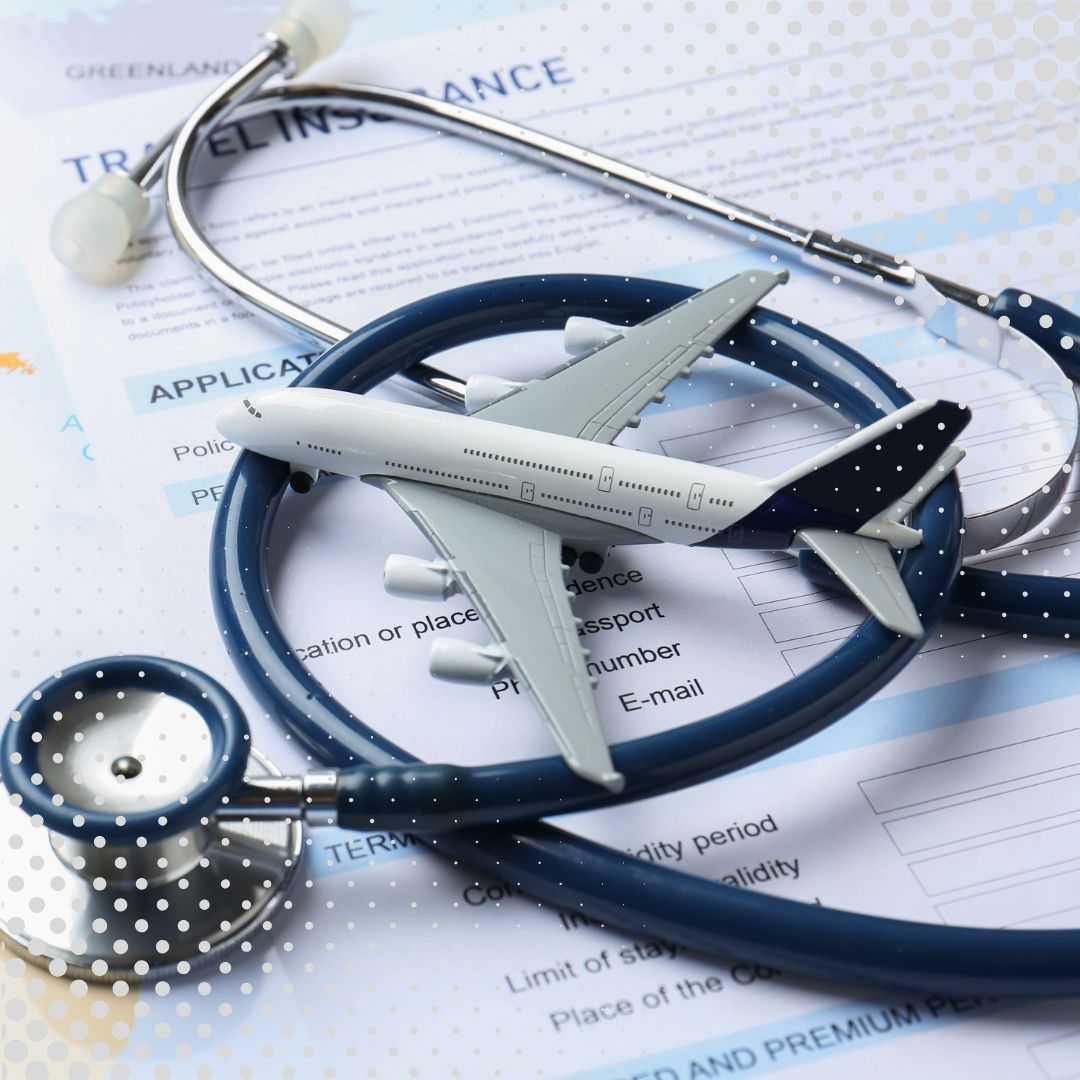




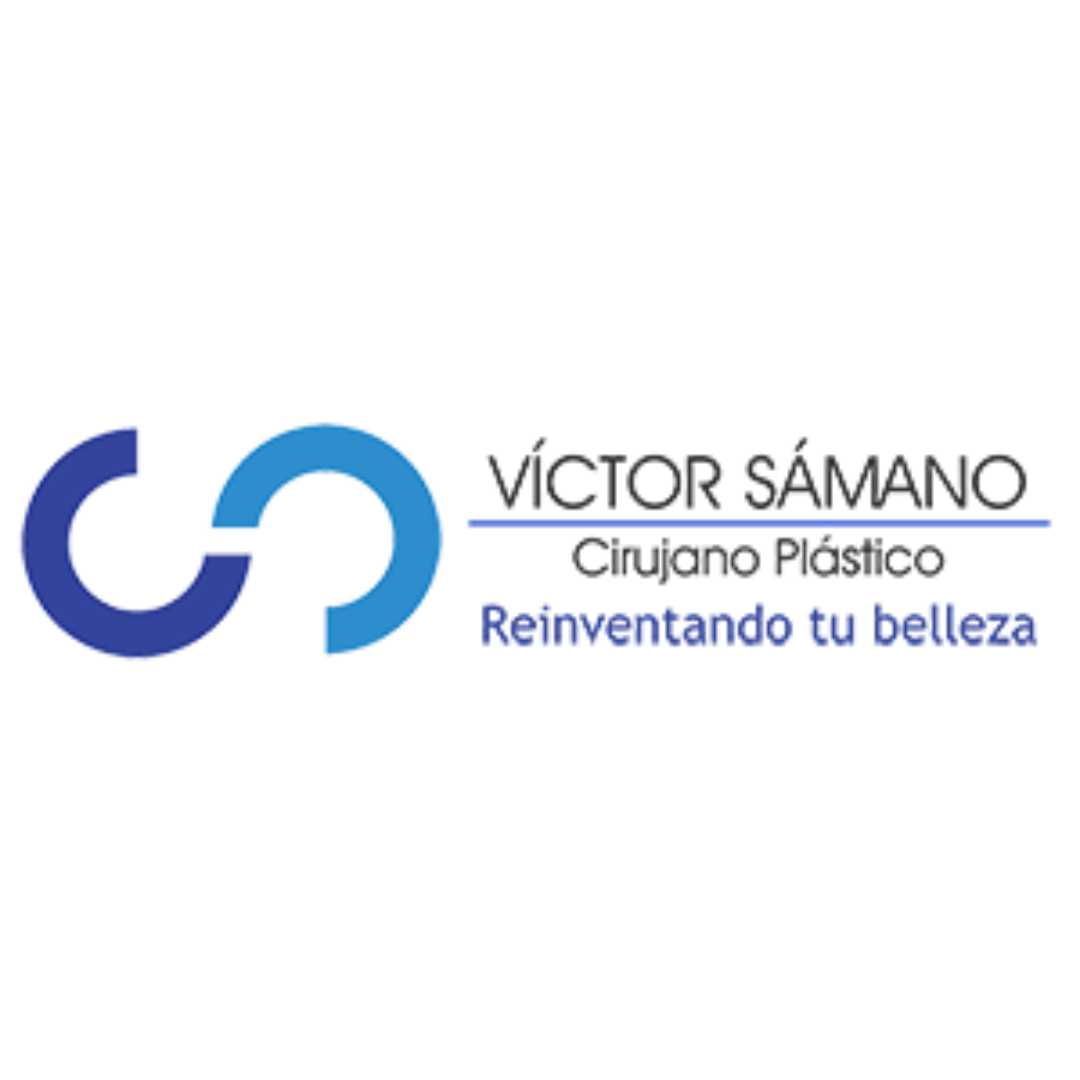
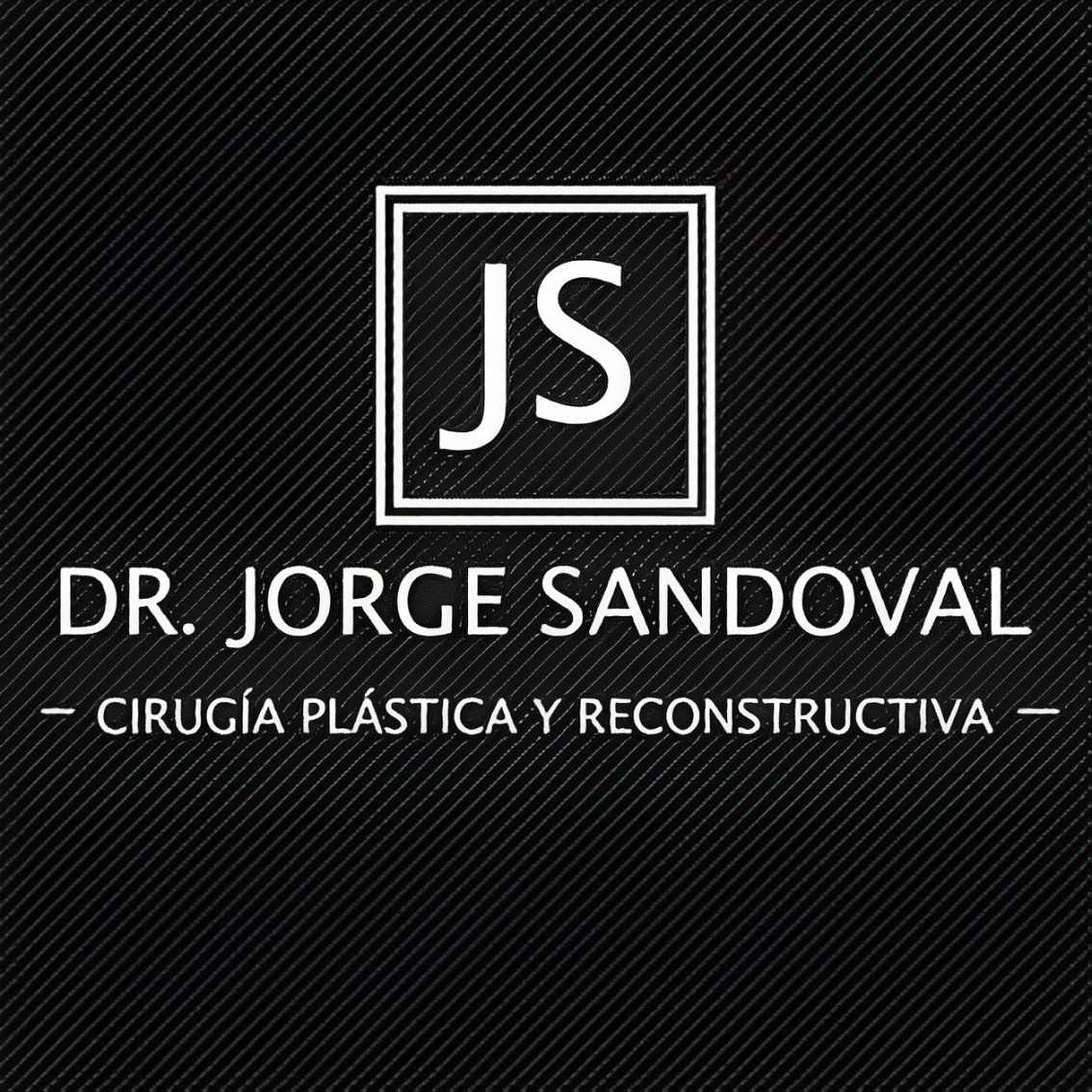
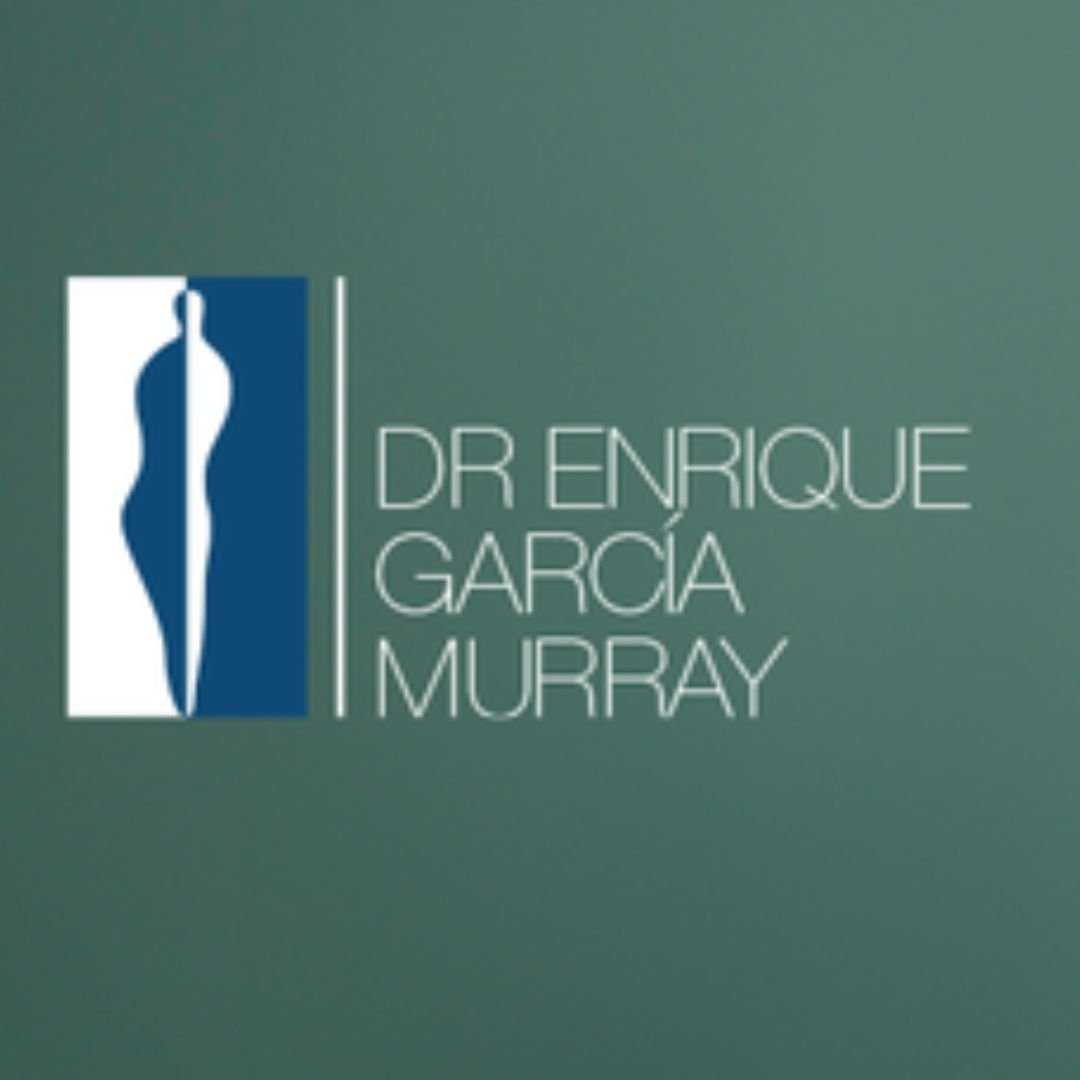
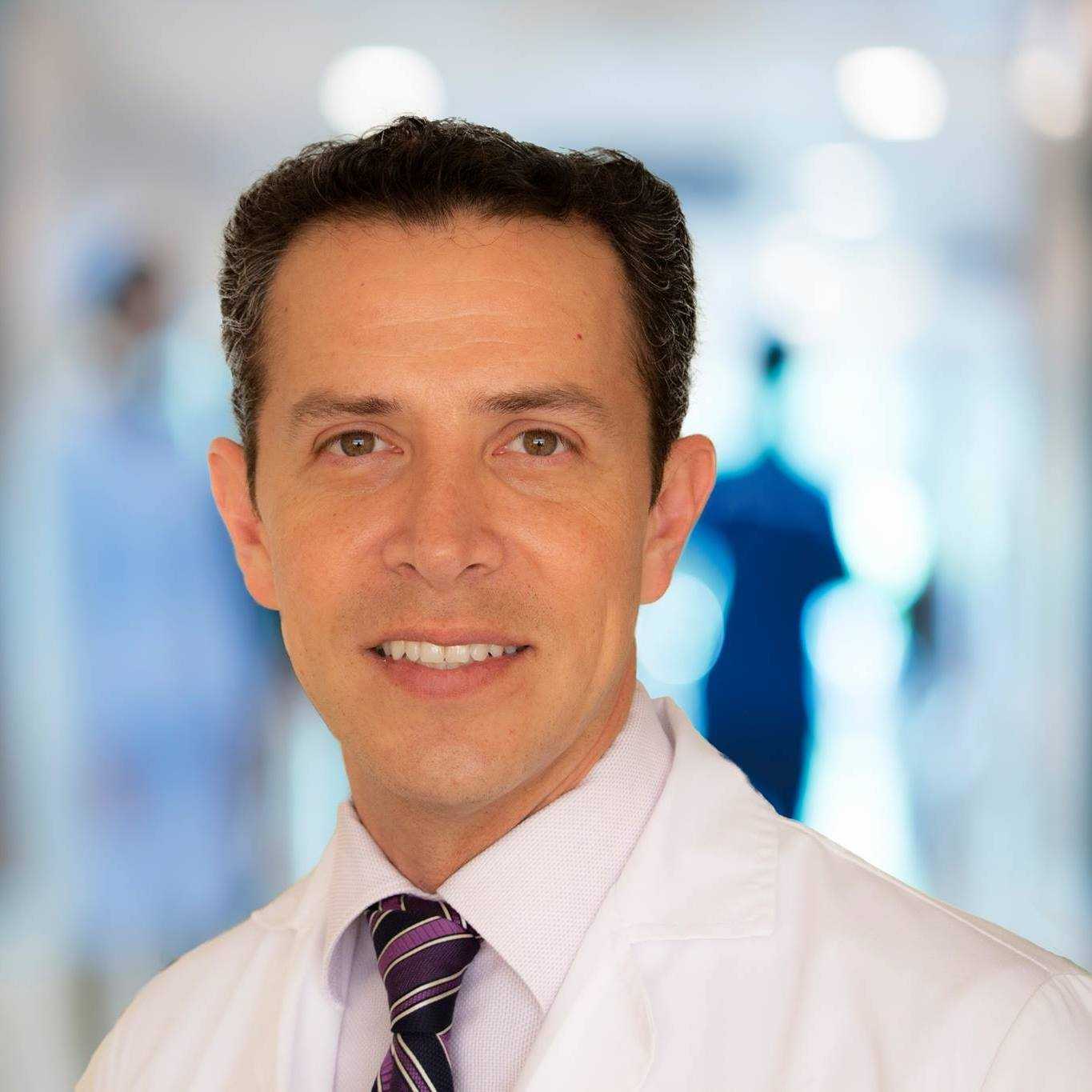

Share this listing